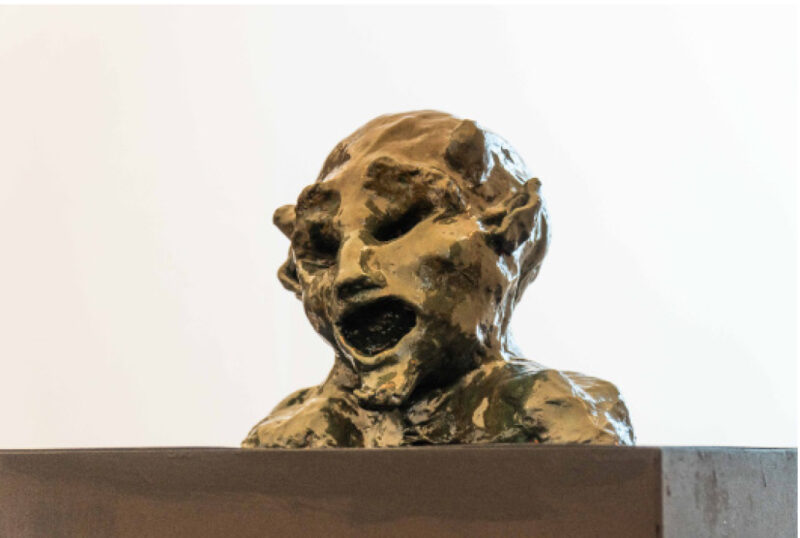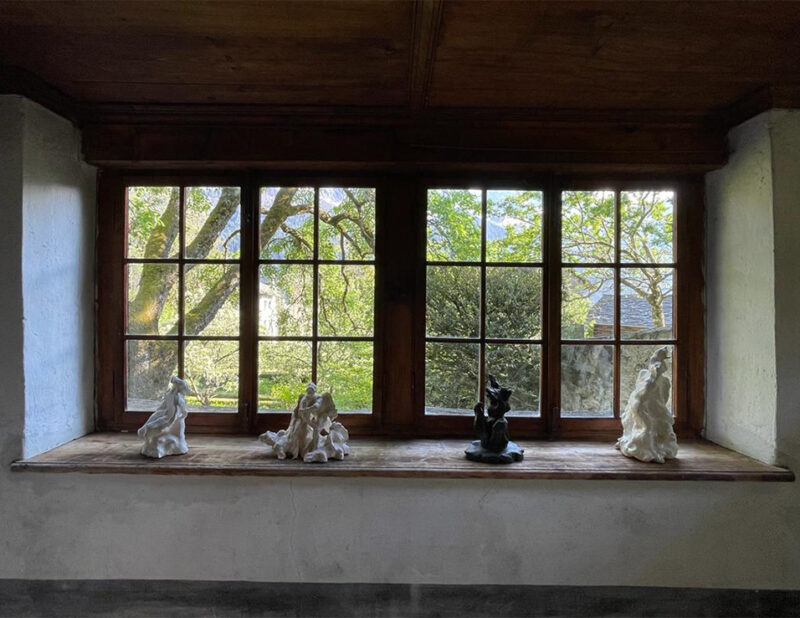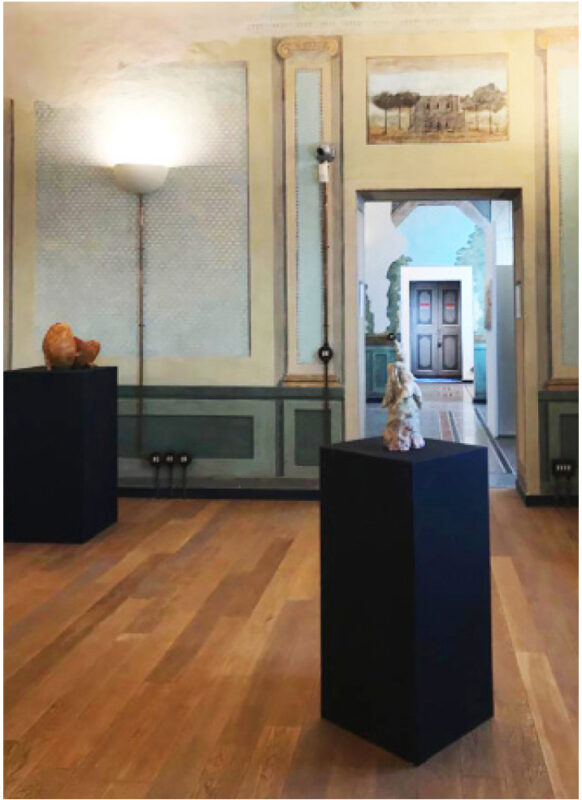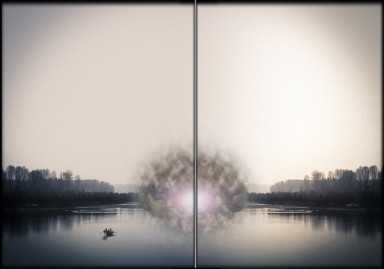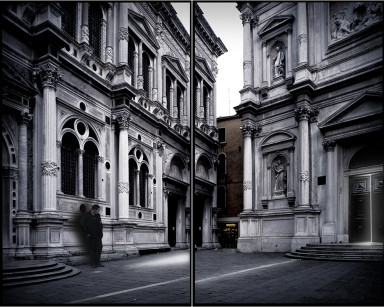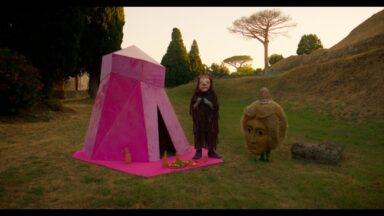Maurizio Barberis at the Contemporary Culture Center in Palazzo Tagliaferro, Andora
Words Patrizia Catalano
Maurizio Barberis is an author who has refined, in recent years, his poetic research by devoting himself to exploring through photography, painting and the plastic arts the tangencies between the sensitive world, forms, the world of primary perception, the dream, the world of symbolic statements, and myth.
From this conceptual humus came the project for the Contemporary Culture Center of Palazzo Tagliaferro, the Civic Gallery of the Municipality of Andora, which materialized in the exhibition “How to intend the (f)light on the Landscape” with over 78 works dedicated to the Shape of Landscape as a place of the spirit.
Barberis began his work on landscape in the 1990s, curating a series of seminars dedicated to the subject for the Milan Department of Culture. In the introduction to the Andora exhibition, he talks about form/landscape and sign/landscape. Two definitions that move precisely from that first moment of reflection, where the first term indicates a staging of the landscape no longer as the background of an action, as in late classicism, but as the protagonist of the pictorial narrative, as occurs from early Romanticism onward. Think of Carl Gustav Carus, Philippe Otto Runge, and especially Goethe and Caspar Friederich.
The second term, sign-landscape, surpassing this first definition, structures the narrative in its symbolic dimension, as a journey of the soul.
In the year 2000 there was an important solo exhibition at the Morat Foundation in Freiburg, Germany, which summarized the sense of this first reflection, centering on the theme of Form/Landscape related to the definition of Horizon as a pure phenomenal object, i.e., related to a single sensory dimension, sight.
The exhibition at Tagliaferro Palace started precisely with some paintings related to that early proto-Romantic dimension of landscape, paintings accompanied by a small satyr’s head that reinforces the sense in that direction, as do other small sculptures in the exhibition. Subsequent years have been characterized by an in-depth reflection on the image, its symbolic values, and the bearing it has on functions related to memory (Bergson-Ruyer), where memory means something that transcends the simple bodily dimension to draw on functions not only related to the history of the individual person.
Photography becomes, in this direction, a privileged tool of research, referring in particular to certain works devoted to multiple exposure photography made by H. P. Robinson in the second half of the nineteenth century, which were part of the Pictorialist current, or to the research made in more recent years by the American Minor White, the Rural Cathedrals, by John Pfahl with the Altered Landscapes or by certain photographic visions of Paul Caponigro, to mention only a few examples. The relationship between synchrony and diachrony is the leading motif of a research on the symbolic values of the image, referring to the Memory/Time pair. Of course, the structures of the psychic unconscious, the collective unconscious of Jungian psychoanalysts, have a precise relationship (as precise as such a theme can be) with these aspects of his artistic research.
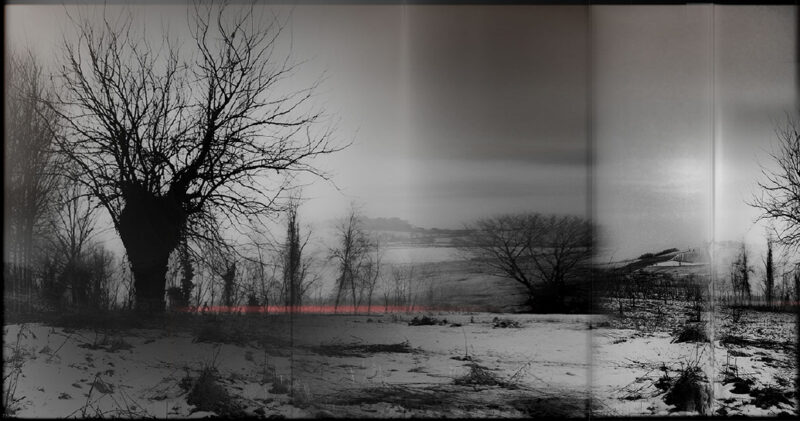
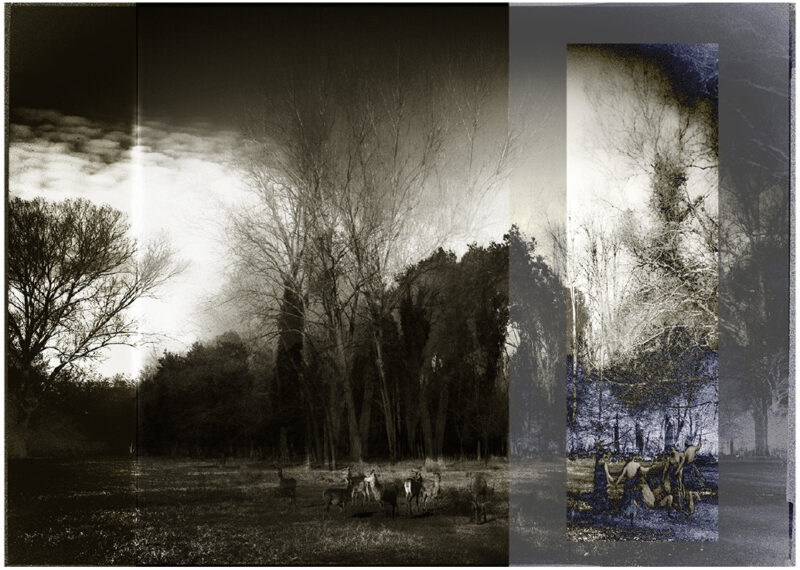
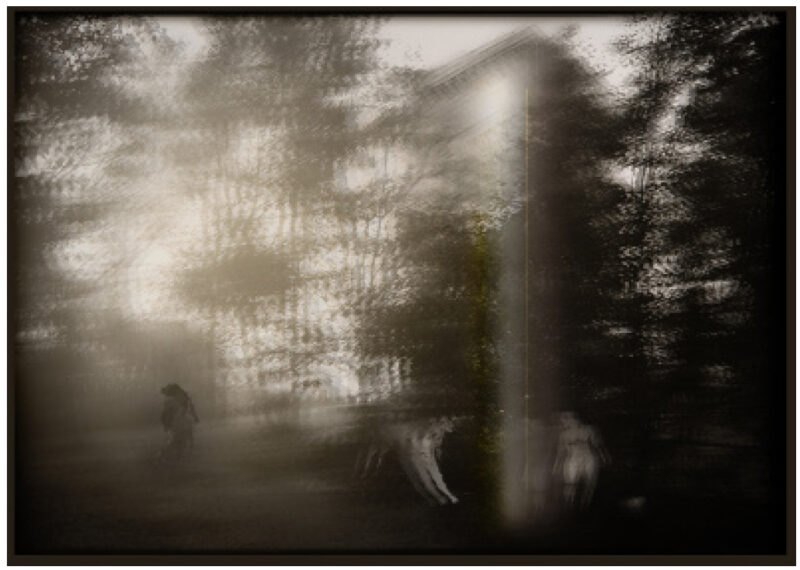
From this relationship with psychoanalysis, the science that more than any other in the modern world has dealt with the Soul, arises the alchemical relationship, the process of modification that sees the work of the artist-artifex no longer only as a path dedicated to poetic forms of language, but as a search for meanings that can lead to the transformation of a psyche-soul into a form of active spirituality. From lead to gold, toward a greater awareness of Man’s identity and potential. Thus the Image, through vision and the rhythmologies present in it, becomes the privileged instrument of a poetic dynamic transformation of the author’s psyche, a kind of sublimation of its material component. Of course, this is a process in fieri. No presumption of success, but rather an attempt in progress. Paintings, photographs, sculptures, and installations thus configure an exhibition itinerary, articulated through conceptually connected islands, that unfolds in the various rooms actualizing a visionary and fantastic path that transfigures the idea of Landscape, room after room, through its reduction to a symbol. A spiritual world underlying an itinerary of transformation intended to liberate the most performing instances of the human spirit. The Form/Landscape is thus recomposed through large canvases of imagined places, drawings with figures, small terracotta sculptures, which constitute the personal corollary of the mythological unconscious of the Milanese artist. Large- and medium-format photographs that elaborate an analog passage transformed into digital hyper-reality, through a memory experienced no longer as a logical sum of space/time fragments, but as an absolute continuum without boundaries. This experience was continued with an exhibition in Engadine (Switzerland), at the Palazzo Salis in Soglio, on the occasion of the Bregaglia Valley Biennial, an exhibition curated by Carlo Biasia and Benedetta Scarella, in collaboration with Diana Segantini and the Segantini-Maloja Association.
Palazzo Salis is a very special place. There still exists, intact, the apartment that the Segantini family occupied during the summer, and the room where Reiner Maria Rilke stayed, perfectly preserved. Almost a museum.
The title of the exhibition, “Ein Traumgedicht,” refers to a dream made and improperly translates as “a dream in the form of a work,” and is always dedicated to the theme of landscape, but in this case to the panic sense, to the “et in arcadia ego,” that emerges from an instinctual and primitive relationship with nature. La mostra che si è inaugurata il 18 giugno, chiuderà il 24 ottobre. The exhibition, which opened June 18, will close Oct. 24. A talk related to the themes of the exhibition curated by the Segantini Foundation in collaboration with the Segantini Maloja Association is scheduled for Oct. 8. Salis Palace, Piazza 2, Soglio.
